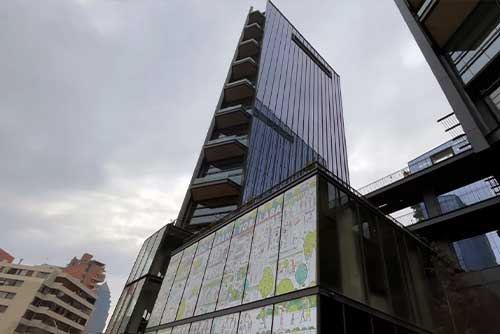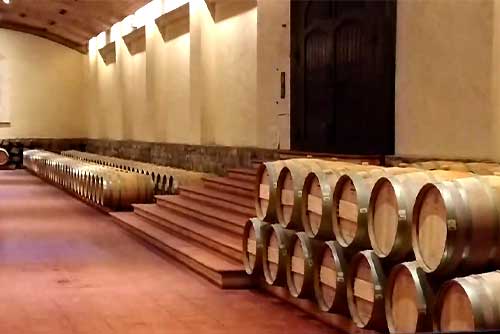You must visit routes in Santiago

The Moneda Course
It’s easy to start your tour of Santiago at the Moneda Palace.
Take Metro Line 1 or walk to Moneda Station.

Private Santiago City Half Day Tour
A palace with a painful history: the Moneda Palace
This palace currently serves as the Chilean presidential residence. “Moneda” means “money” in Spanish. It was used as a mint until the late 17th century and became the presidential residence in 1846. In 1973, President Salvador Allende met his end here after resisting the coup d’état forces led by Augusto Pinochet to the last. Behind the palace, a statue of him stands alone on one side of the Constitutional Square. Tours of the palace are only available on weekends and must be booked in advance.
The center of Santiago: Plaza de la Constitucion
This large square is located behind the Moneda Palace and is home to many government offices. The square is in an inverted triangle around the Moneda Palace, with a cool green lawn behind it. Around Constitution Square are statues of Chilean heroes, including a statue of President Salvador Allende. The changing of the guard, which takes place every other day at 10am, is a highlight of the square. Watch the guards perform their sword-like military duties.
Moneda Cultural Center (Centro Cultural Palacio de la Moneda)
After exploring the Palacio de la Moneda, head back to the main entrance and head to the Moneda Cultural Center in the plaza’s basement.
Located beneath the plaza in front of the Palacio de la Moneda, it was once used by Pinochet as an underground bunker and has been converted into a cultural center. It has two large exhibition halls, a cinema, souvenir shop, and cafe, and hosts a variety of exhibitions throughout the year.
Ahumada Street (Paeseo Ahumada)
Two blocks down the main boulevard, Av. Libertador Benardo O’Higgins, from the Moneda Palace, you’ll find the pedestrianized streets of Nueva York and Ahumada. Across the street is the University of Chile, Santiago’s signature pedestrianized street. Stylish shops line both sides of the street, and stalls selling accessories and trinkets line the sidewalks. In the afternoon, like the Plaza de Armas, it attracts street artists and onlookers, with graffiti-covered phone booths and building facades covered in murals. Grab an outdoor table at a cafe with a view of the Ámada and enjoy a traditional South American tea called mate.
Armas Course

Private Walking Tour through Santiago de Chile
Always bustling, Plaza de Armas
This is where your tour of Santiago begins. The Cathedral, City Hall, Central Post Office, National History Museum, and Santiago Museum surround the Plaza de Armas like a folding screen, making it the “heart of Santiago,” as some call it. The center of the square is lined with fountains and tropical trees and is dominated by a statue of Valdivia, the founder of Santiago in the 16th century. Nearby are Aumada and Oiggins streets, which are lined with unique shops and restaurants. Street performers and artists are also a big draw for travelers. Be careful with your belongings, as pickpockets and muggings are common.
Church of San Francisco (Iglesia de San Francisco)
One of the oldest buildings in Santiago, the Iglesia de San Francisco, which stands tall across O’Higgins Street, was completed in 1618. The clock tower was added to the top of the building in 1857. The Virgin of Socorro on the center altar was once owned by Valdivia. Next to the church is a museum with a collection of saints and religious paintings.
Precolombino Museum (Museo Chileno de arte Precolombino )
As you walk along Plaza de Armas, take a left and go one block. You’ll find the Precolombino Museum on the corner.
One of the must-see museums in Chile. The museum is divided into two main parts: one is the “Chile before Chile” section and the other is the “Art of Pre-Columbian America”. On the second floor, rooms 1 through 8 display excavations and artifacts from different periods and regions. Room 12, the museum’s basement, is devoted to the history of Chile’s pre-indigenous and indigenous peoples, so if you want to follow the chronological order, you can start there.
National History Museum of Chile (Museo Historico Nacional)
The Plaza de Armas is bordered on four sides by the cathedral, the National Museum of History, the central post office, and an arcade with a hot dog alley.
If you’re interested in Chilean history and human rights, the Museum of Memory and Human Rights is worth a visit. It’s relatively close, but a bit far to walk. From the Plaza de Armas, take Metro line 5 (green) to Quinta Normal station. Take the escalator up to the surface and you’ll see the huge green museum across the street.
The most sacred place in Santiago is the Santiago Cathedral Catedral
The cathedral is in the Plaza de Armas. It is the center of Catholicism in Chile and the spiritual home of Santiago’s citizens. Built in the early 17th century, the cathedral was renovated after major earthquakes and was completed in its current form at the end of the 19th century. As a testament to its age, the cathedral’s interior is filled with religious paintings and sculptures of great cultural value. Join the hourly mass in Spanish. It is etiquette to remove hats and sunglasses and turn off the flash when taking photos inside the cathedral.
Other Old Town Courses

Private Walking Tour through Santiago de Chile
Santiago’s Central Market (Mercado Central)
Together with the Vega Market on the other side of the Mapucho River, this is Santiago’s largest market. It has modern architecture and is divided into sections selling a variety of goods. Seafood restaurants specialize in freshly caught seafood from the South Pacific. Don’t miss the ceviche, which is similar to sashimi in Korea, and the churrante, a large pot of seafood and meat.
Museo Nacional de Bellas Artes (MNBA)
Leave the main entrance of the central market and follow the Mapucho River to the Vallas Artes neighborhood. Walk along the park and you’ll find the National Museum of Fine Arts.
The National Museum of Chilean Art is a palace modeled after the Petite Palais (now a museum) in Paris, France, and houses a wide range of Chilean and European medieval and modern art. Behind the National Museum is the Museo de Arte Contemporáneo (MAC), which features design, photography, sculpture, and more.
Santa Lucía Hill (Cerro Santa Lucía)
One block down from the National Museum of Fine Arts is the northern entrance to Santa Lucía Hill. It’s an easier climb than the southern entrance on O’Higgins Boulevard. If you’re feeling a bit tired, take a break at a cafe on Rastaria Street. The fortress was built by Valdivia, the founder of Santiago, to prevent resistance from the natives. Today, it’s a park with large and small forests. In the summer, you’ll find Santiago’s residents spreading out on mats throughout the park, and in the spring and fall, you’ll find couples on dates. The hill itself isn’t very high, but the path is narrow, so it takes a while to get to the top. Once you reach the top, you’ll have a great view of the city of Santiago. On a clear day, you can see the hill of San Cristóbal and even Mount Aconcagua in the distance. Many couples kiss here, as it is believed that love is made here.
San Cristóbal Hill (Cerro San Cristóbal)
After descending the Santa Lucia hill, walk back along the Mapucho riverfront to Plaza Baquedano. Cross the bridge and continue straight down Pio Nono street for about 10 minutes to the funicular stop on San Cristóbal Hill. This 880-meter hill is north of Santiago. It has a zoo, outdoor pool and observation deck and is always crowded on weekends. At the top is a small church, where a statue of the Virgin Mary, donated by France in 1920, stands tall as the symbol of San Cristóbal Hill. It’s higher than the Santa Lucia hill and offers a panoramic view of downtown Santiago. You can climb it by following the trail to the left of the entrance, but it takes a long time. We recommend taking the cable car.
Neruda’s house (La Chascona)
With your back to the San Cristóbal Hill funicular boarding area, turn left and go around the corner one block to find Neruda’s house, La Chascona. They don’t let many people in at once, so you may have to wait a bit if you go at peak times. Pablo Neruda’s home was in Santiago, where he lived with his third wife, Matilda Urrutia. Neruda loved the sea and decorated the house with nautical motifs, including the kitchen and living room. The wooden interiors and colorful colors are particularly impressive.
It’s etiquette to take photos with the lights off.
Santiago’s New Town, Tobalaba

Private Night City Tour with San Cristobal Hill And Dinner Show
The new neighborhood is in the east of Santiago. It’s a far cry from downtown, where you’ll find the Moneda Palace, Plaza de Armas, and Santa Lucia Hill. It’s full of skyscrapers, modern hotels, and exclusive restaurants. Walking around Tobalava, surrounded by skyscrapers, you feel like you’re in a North American metropolis, not South America. Compared to downtown, the streets are clean and well-policed. There are many restaurants popular with Santiago’s youth, such as Hard Rock Cafe and Irish Pub. If you want to experience the laid-back South American pub culture, check out Tobalaba.
Taste the devil’s wine: Concha y Toro Winery

Concha y Toro Winery Tour from Santiago
A winery on the southern outskirts of Santiago. It’s no wonder it’s been ranked number one on the “Top 10 Most Admired Wineries in the World” list for two years in a row. The Casillero del Diablo wine, also known as the ‘Devil’s Wine’, is an ambitious creation of the Conchay Toro winery. It has taken South America by storm and is now available in European and Asian wine markets. To fully appreciate it, take a one-and-a-half-hour tour of the winery. It’s popular because you’ll get an overview of the history and facilities of the Conchay Toro winery, as well as a chance to sample some of their famous wines.
Chile’s capital city of Santiago is a must-see gateway city before heading to Easter Island. The old town, centered around the Plaza de Armas, and the new town on the outskirts create a contrasting atmosphere. It’s very interesting to see the different sides of the city.


